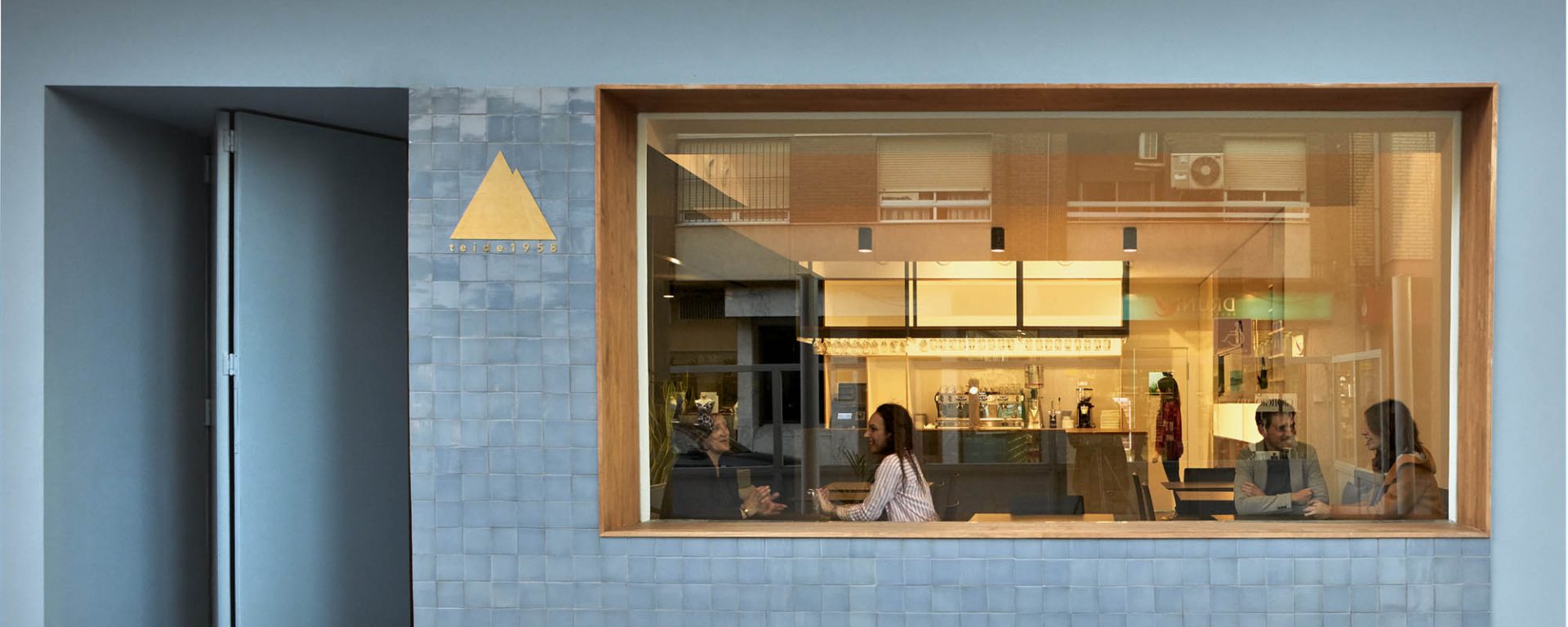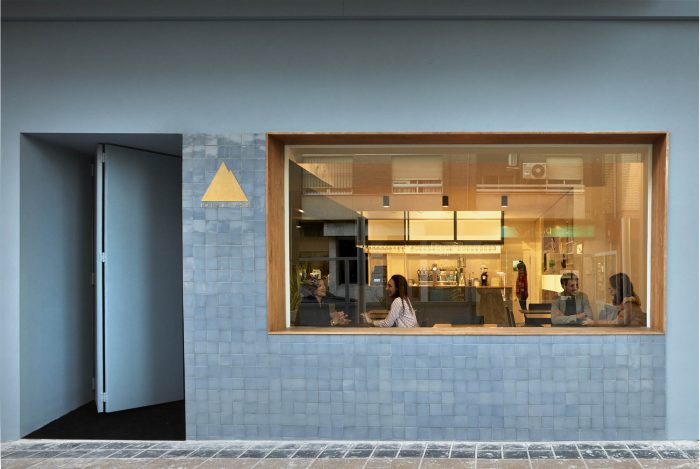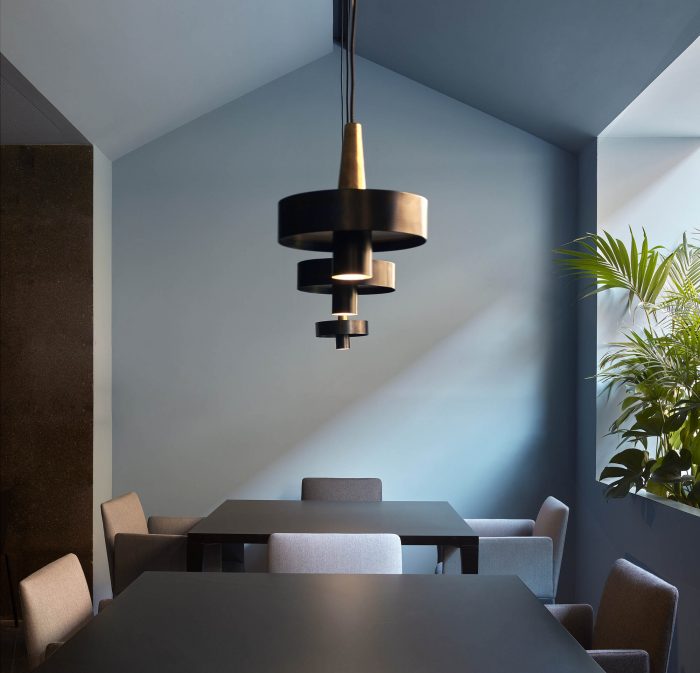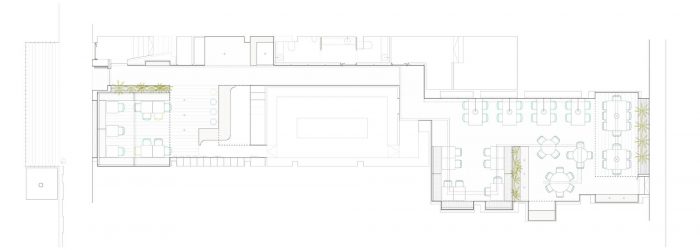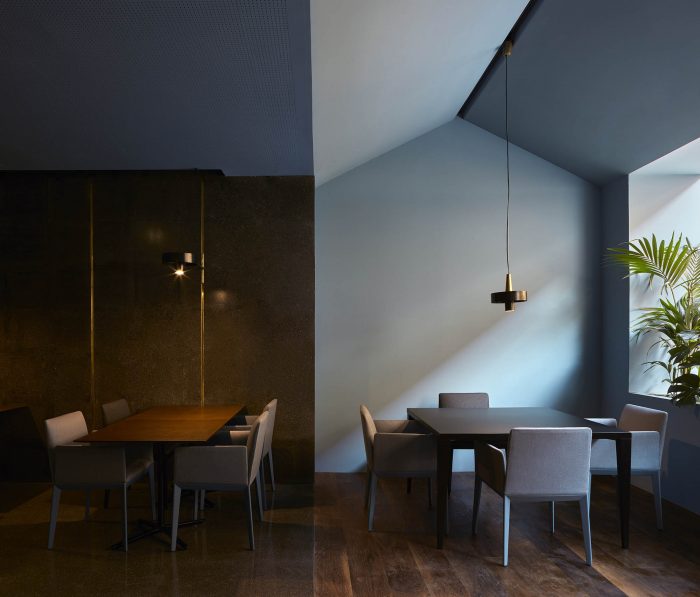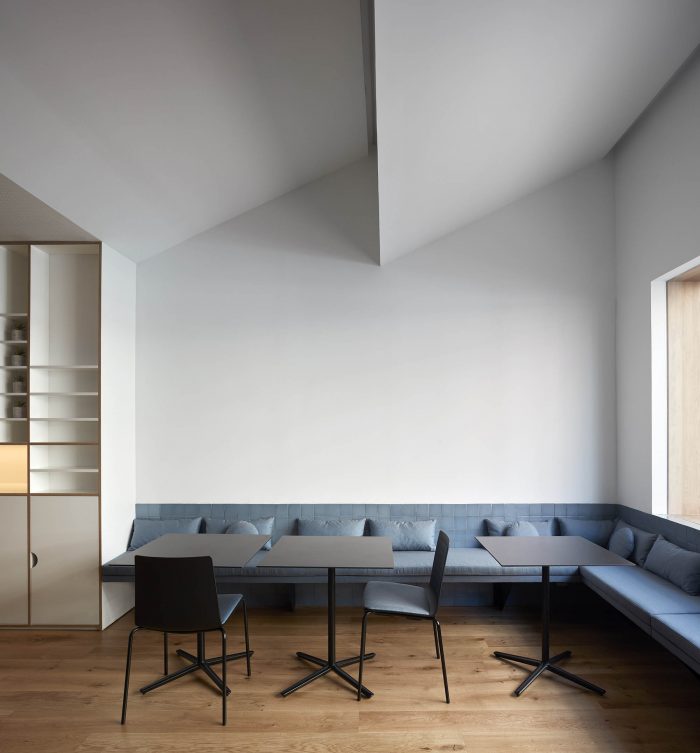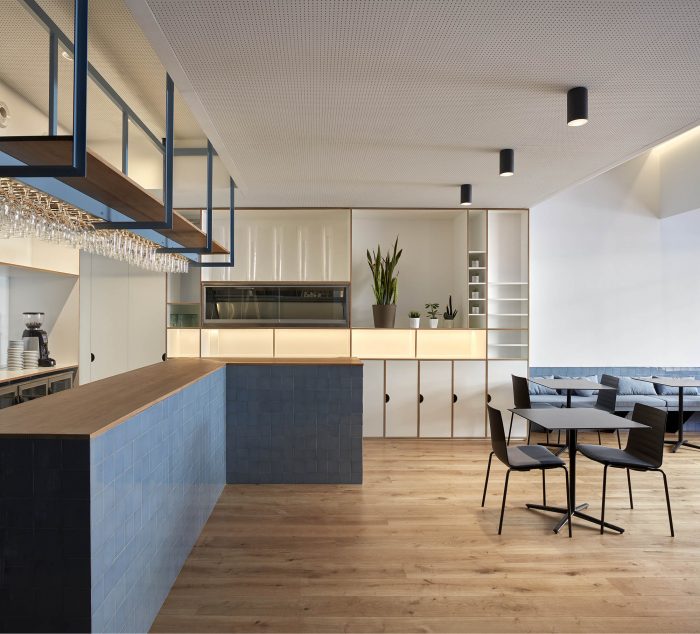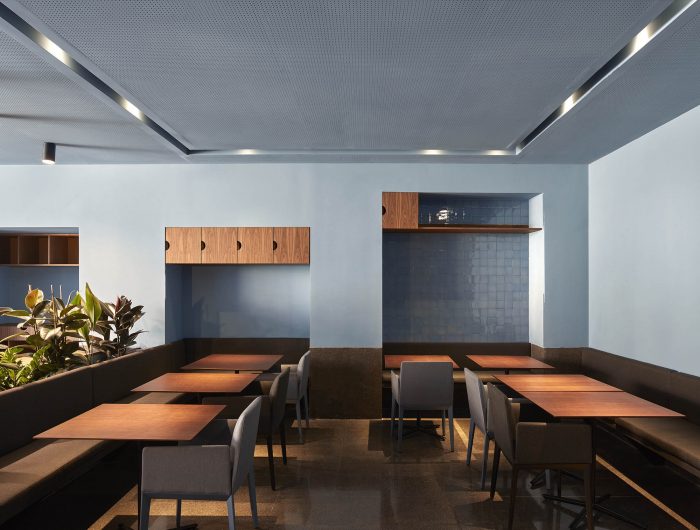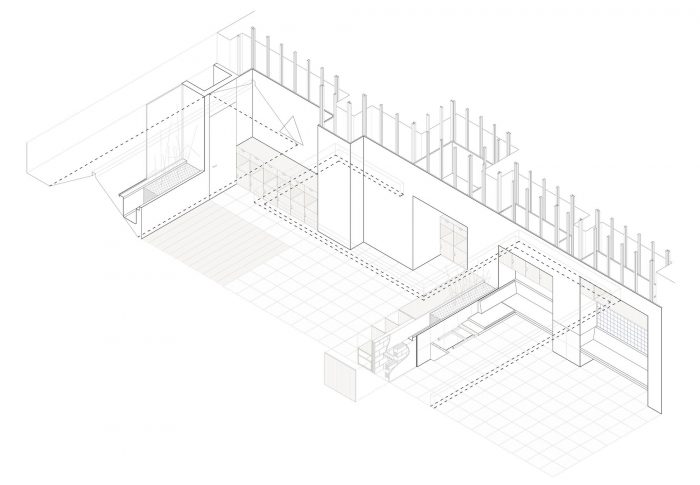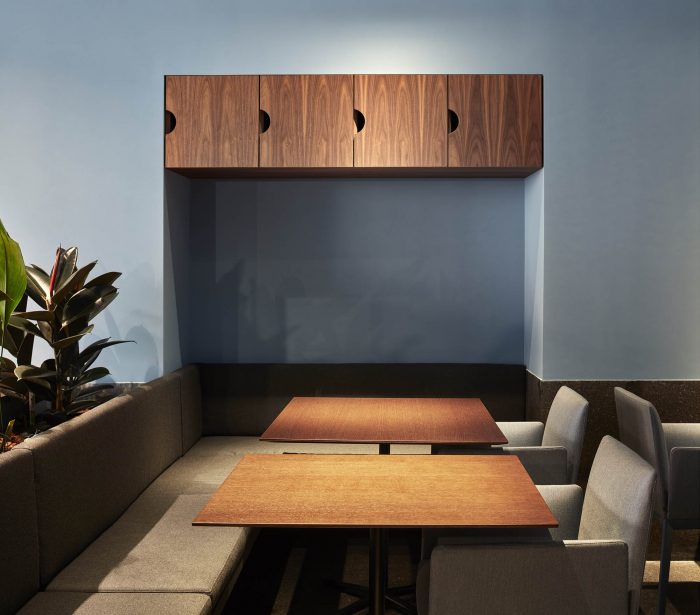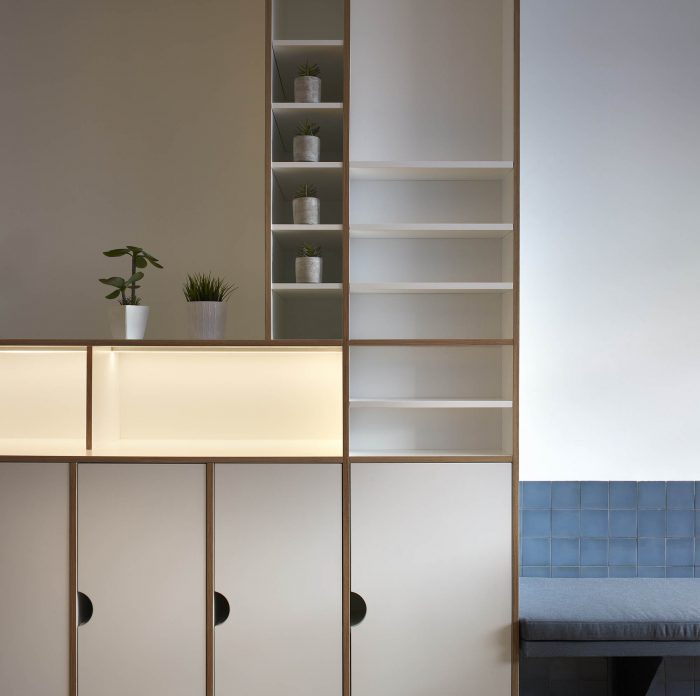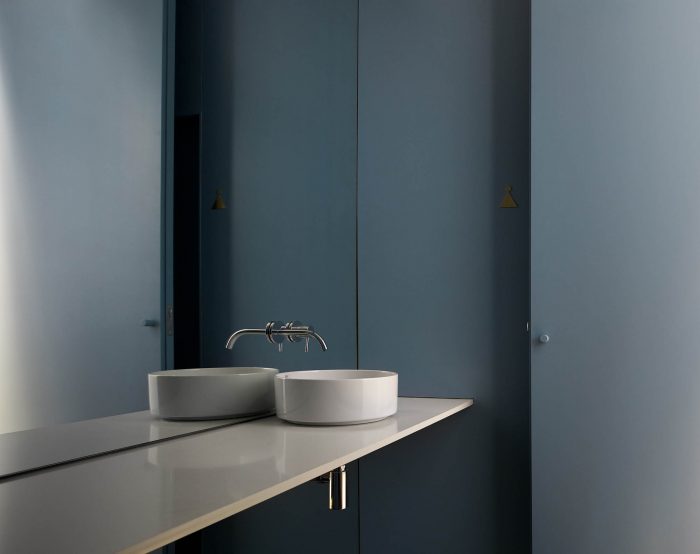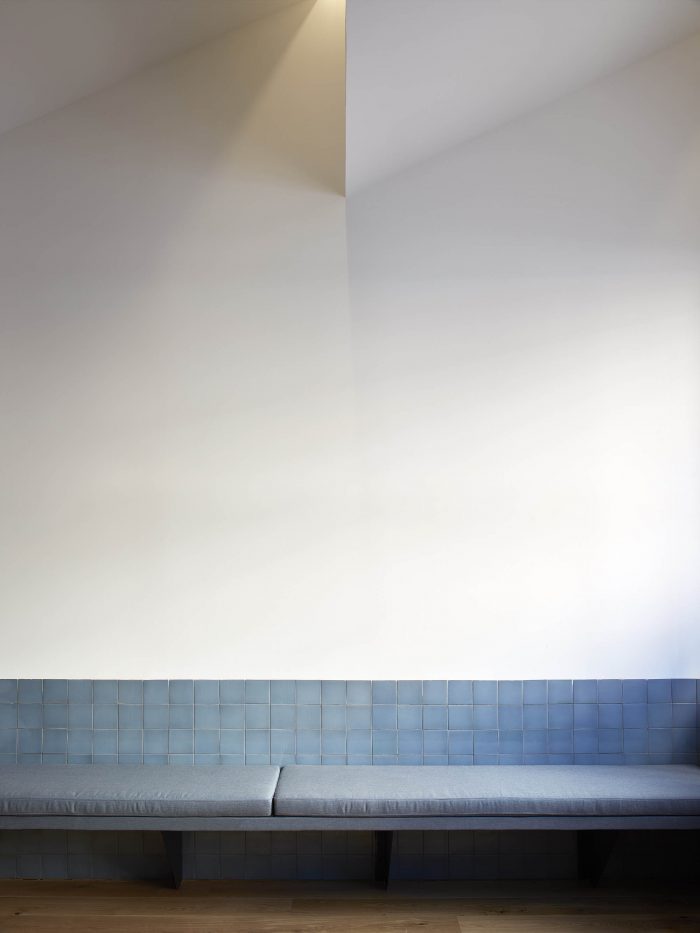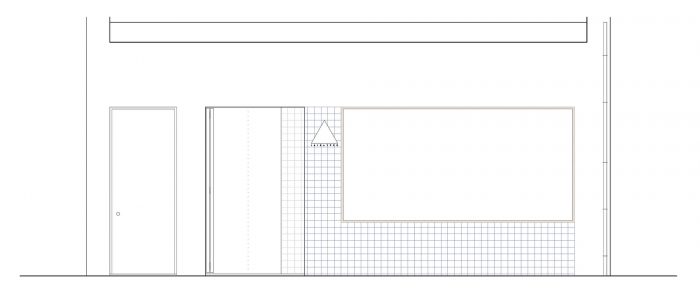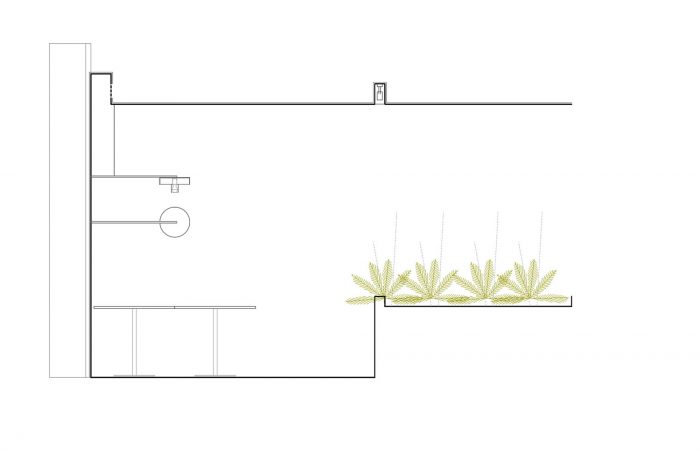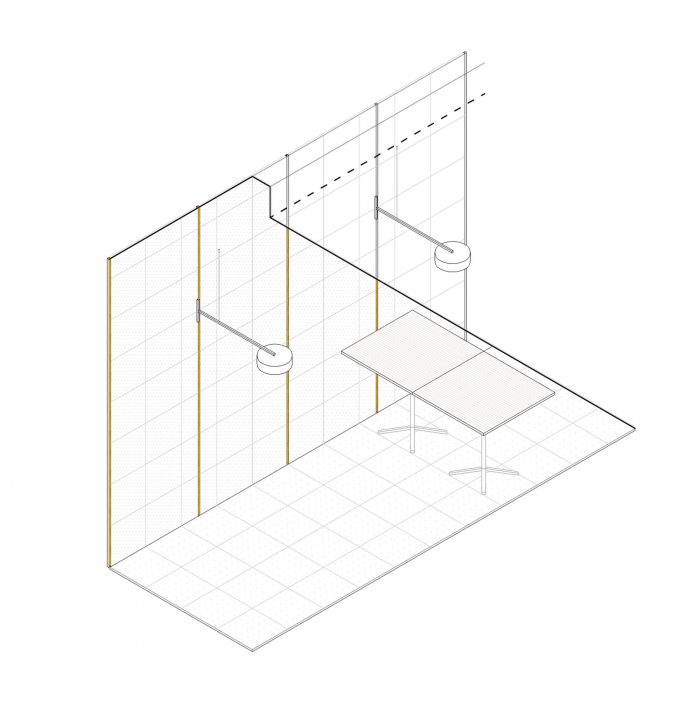该项目从一个有吸引力的挑战开始,致力于:更新一个传统。
位于西班牙瓦伦西亚附近的泰德餐厅是一个经典的餐厅,它能够在一代又一代人的努力下不断升级,但从未失去其原有的价值:传统、质量、接近性和幸福感。在20年没有更新的情况下,是时候恢复活力,从而更新其空间和厨房的概念。
The project starts from an attractive challenge to committed: renew a tradition.
Teide restaurant, located in a town near Valencia in Spain, is a classical one that has been able to upgrade from generation to generation without ever losing their original values: tradition, quality, proximity and well-being. After 20 years without renewing it´s time to rejuvenate and thereby also update its concept of space and kitchen.
因为这一切,该项目提出了一个室内建筑的解决方案,永恒的,能够保持优雅的,总是与新鲜感和现代性相结合的要求。
Because all of this, the project proposes a solution of interior architecture, timeless, capable of maintaining the elegance of always combining it with freshness and modernity required.
长期以来,餐厅一直是一个几乎隐藏的,与咖啡馆空间断开的通道。抬高建议,该项目建议接近这个空间,直到主入口。
For a long time the restaurant had been an almost hidden and disconnected access from the cafe space. Raised proposal, the project proposes to approach this space up to the main entrance.
两个主要的房间,餐厅和咖啡馆,两种感觉和两种材料代码的对话,从访问到呈现给用户相同美食的两个选择。为了区分空间,材料和颜色的选择在该项目中起到了重要作用。
咖啡馆产生了一个较冷的环境,全球的自然光,地板的木材保证了用户的亲近和舒适,它与植被共存于一个健康的环境中。
Two main rooms, restaurant and cafe, two sensations and two material codes dialogue from access to present to the user the two options of the same cuisine. To differentiate spaces, material and color choices has been instrumental in the project.
Cafe arises with a cooler environment, global, natural light, where the wood of the floor guarantees the closeness and comfort of the user, which coexists with vegetation in a healthy environment.
餐厅,位于地方的后面,把它的通道移到入口处,也配置了主立面。在这种情况下,石材地板,抛光,结合海蓝色背景上的胡桃木元素,试图把用户带到一个安静和优雅的环境中,更及时和定向的光线,允许获得定义和私人空间。
Restaurant, located in the back of the place, moved its access to the entrance also configuring the main facade. In this case, a stone flooring, polished, combined with elements of Walnut wood on a sea blue background trying to take users to a quiet and elegant environment with a more timely and directed light that allows getting defined and private spaces.
传统和现代在材料的选择上也得到了认可,通过使用已知和熟悉的材料 石头和木材,但在位置、尺寸和比例上到现在还没有提出。
在去餐厅的路上,天花板平面上的一条线负责加入我们,并在这个过程中引导我们。它隐藏了间接照明和所有必要的设施,保持隐蔽并完全整合在自己的线路中。
Tradition and modernity are recognized also in the material choice through the use of known and familiar as materials Stone and wood but in aposition, size and proportion up to now not raised.
During the path to go to the restaurant, a line in the plane of the ceiling is responsible for joining us and guide us in the process. It hides indirect lighting together with all the necessary facilities, remaining hidden and fully integrated inside of own line.
外面的灯具也是从建筑学的研究中设计出来的,只是识别空间和精确地照亮每个晚餐的范围。
根据每个空间和植被选择的家具只是赋予每个环境以相应的个性,使每个空间有区别而不失去整体的和谐。
目标已经实现,一个新的泰德,旨在保持一如既往。
Outside the luminaires also designed from the study of architecture just recognize the spaces and illuminate with precision the scope of each dinner.
The furniture chosen according to each space and vegetation just give each of the environments the personality that corresponds to them allowing to differentiate each space without losing the harmony of the whole.
The objective has been achieved, a new Teide which aims to remain the same as always.
Architects: Horma
Area: 280 m²
Year: 2017
Photographer: Mariela Apollonio
Manufacturers: Andreu World, Ceràmica Ferres, Erco
City: PORT DE SAGUNT
Country: Spain

